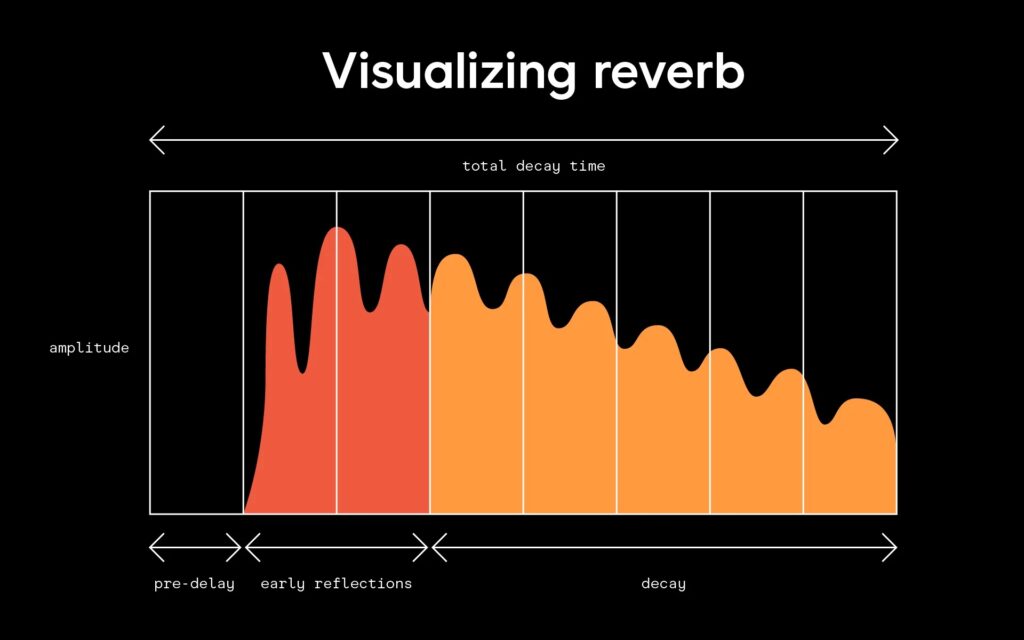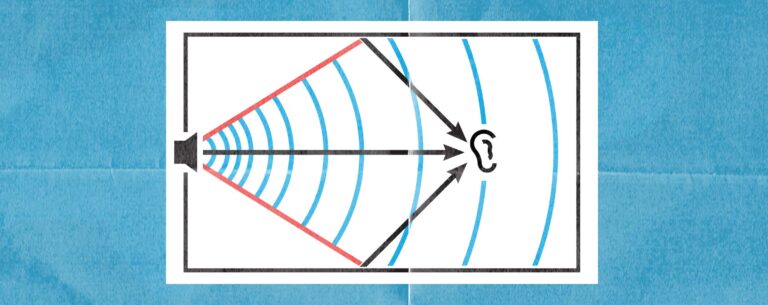Last Updated on January 4, 2024 by IDS Team
As any music producer knows, reverb plugins add depth and space to your recording and are one of the most powerful effects in the mixing toolbox. But that doesn’t mean it’s the easiest to master. It can be tricky, and there are quite a few common pitfalls that sideline many producers.
That’s why we’re going to help you fine-tune your knowledge of reverb plugins so that you can get those sound waves going where you want them.
Clashing Tails
Using many reverbs on a single track can result in a beautiful sound, but be careful not to create problems for yourself by allowing reverb tails to overlap unpleasantly. The overlapping itself isn’t an issue, but it can cause confusion in your mix when the tails don’t match.
Pay attention to your reverb’s decay speed and diffusion, as well as the different types you’re using.

CPU Overload: Employing Many Units When Only One Will Do
Sometimes, stacking reverbs can be an excellent idea, but you don’t need many instances of the same reverb on a range of channels. Create a Send channel instead, apply reverb to it, and send all the channels that you want affected to it.
You’ll be able to set how much of each channel gets sent, so you can accentuate the reverb effect of one channel, like a bass drum, while allowing the same effect to be more subtle on others. This greatly reduces the load on your CPU and means you’ll avoid the risk of having to phase between nearly identical reverb tails.
Inadequate Reverb Use
Most sounds we come across in our lives arrive within a natural ambience. They’re organic reflections that express the sound we’re hearing with reverb. In fact, reverb is so common to our understanding of the world that when we hear sounds without it, we’ll immediately notice.
They’ll sound alien and sterile, and they will stand out a mile. You might think that being this noticeable is not all bad, and you’re right. There are certainly times when using no reverb on a sound makes it lift out of the mix without obscuring the track’s other elements.
But more often than not, you’ll find that a total absence of reverb is more of a problem than it is an advantage. Most listeners won’t be able to see the beauty of sterile, cold sounds, and we need a little ambient reverb to ensure we enjoy them.
So, while there’s a danger of overusing reverb and seeing it turn your song into a sound soup, under-using it can be just as much of an issue.
Subpar EQing
Poor EQing is another very common mistake producers make with reverb.
Reverb gives your sound an entirely new level of density, and this can sometimes emphasize unpleasant frequencies. It can also extend the presence of mid- and low-frequencies and, thus, cause muddiness. You can remedy this with a good EQ session.
Whatever the channel’s EQ settings are, place an EQ directly after your reverb and then sculpt the tone to the point where it’s pleasant to the ear.
Tails Clashing With Other Track Elements
This mistake usually occurs with drums. If the reverb on your snare lasts longer than the next hit on the snare, it can cause cumulative reverb to build up, ruining the tone you’ve so carefully sculpted. It’s the same case with other sounds, too, but not just drums. If the reverb lasts so long that it’s still unfolding as the next musical phrase begins, you’ve likely run into the mistake of your tail coming into conflict with other elements of your track.
Drums best demonstrate this issue because they’re short sounds. When the reverb tails are clashing, you’ll notice it instantly. But this logic also applies to all other instruments: if the reverb tails clash, especially in the lower frequencies, your mix is going to start sounding muddy. Overlong reverb decays on hats and snares create chaos in the mix.
You could use this as a useful effect for a short period of time if you’re introducing a new section or as part of a solo, for instance, but it’s going to clutter up the regular, full mixdown.
Uncertainty Regarding Insert or Send
The only word to describe how reverbs behave in a Send or Insert channel is pivotal. When it’s placed on a Send channel, you can control the amount of reverb being used incrementally and subtly administer less or more depending on what that channel needs.
When applied directly as an Insert, the effect will become more pronounced. You’ll be able to mitigate this by reducing the wet amount, but then why not just use a Send channel and save your CPU?
Insert reverbs should be used when you want to create a massive effect, like one you would use for epic breakdowns, sound design, etc.
The Use of Reverb Rather Than Delay
Reverb can be described as a delay or echo with a shorter reflection time. So, it should stand to reason that when you’re mixing music, using a very short delay or echo would emulate a reverb. But this isn’t the case, and the belief that it is makes for one of the most common reverb mistakes.
The effect may be similar, but delays don’t build up as much harmonic density as reverb does. Low frequencies travel slower through a unit or reverb than high ones do. This is how the tone and harmonic density of a reverb are shaped and contoured.
In contrast, delays are simply carbon copies of the source audio. There’s no difference in tonal reflection. This means that while it’s cleaner and less cluttering, it’s also less characterful.
Less Can Always Be More
Whether you’re using a free reverb plugin or you’ve shelled out cash, there’s one rule you can always follow. When you’re in any kind of doubt, dial things down. It’s very easy to become so used to how much reverb there is in your track that you lose sight, or sound, of how it’s really affecting it.
Turn that reverb right down, take the decay length to zero, and then start building up again, referencing all the time. Try different types of reverb and really think about how they’re affecting the character and tone. Try to have an idea in your head of what reverb you want to hear and work towards that.
Final Thoughts
Reverb is one of the most basic effects we use in music production, and it’s also one of the oldest. Advancing technology has ensured that reverb plugins have become a crucial part of today’s recording process because they help to digitally create a more realistic atmosphere and rich, layered sound. If you avoid the pitfalls we’ve outlined here, using these plugins will result in a smoother, more polished song.



